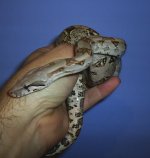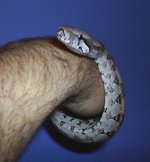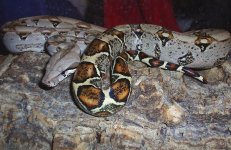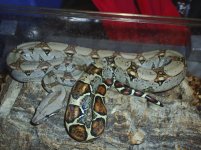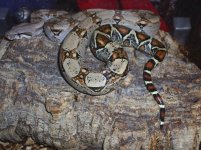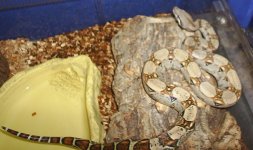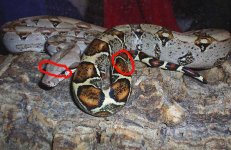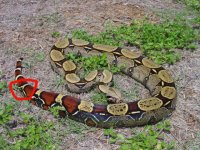I am absolutely, 100% positive that is a BCI. One might wonder how, exactly, I can be so sure...so I'll tell you.
2 Things. First, it possess a "cross" towards the nose. This is most commonly found among Central American BCI, though this is not the determining factor. What makes me so absolutely positive is the saddle count. A BCI will always have 21 or more saddles, starting from the first saddle on the neck to the saddle located directly above the cloaca. Do not count tail saddles. A BCC will always have 20 or less. If you count the saddles in the picture of the BCC, you will notice it has 18 or 19 saddles from neck to cloaca. The snake in question has 24 or 25, or thereabouts...but definitely more than 21.
Color can be an indicator, as BCC tend to be darker. "Speckling" can be an indicator, as BCC tend to display more. The "cross" can be an indicator, as BCC tend not to have them. But all of these indicators are not completely accurate. Saddle count is accurate...always.
What you have there is a BCI...I'd bet money on it...

